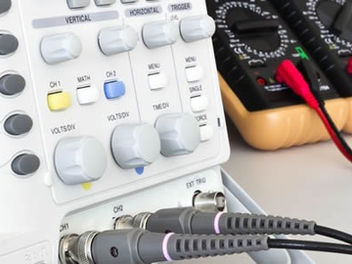How Often Do Items Need a PAT Test?
- Guy hudson
- Dec 16, 2024
- 6 min read
Portable Appliance Testing (PAT) is an essential safety procedure that ensures electrical equipment remains safe to use. Understanding the frequency of PAT tests is crucial for maintaining workplace safety and meeting legal compliance. This complete guide explores the purpose, legal requirements, and benefits of PAT testing to help you stay informed and compliant.
What is PAT Testing and Why is it Important?
Portable Appliance Testing (PAT) involves inspecting and testing electrical appliances to ensure they are safe for use. PAT testing is vital in preventing electrical accidents, including shocks, fires, or equipment malfunctions, which can result in severe consequences for individuals and businesses alike.
The Purpose of PAT Testing
The primary goal of PAT testing is to identify faults or damage in portable appliances that could pose risks. By performing a combination of visual inspections and advanced testing, PAT ensures equipment meets the required safety standards.
Legal Requirements for PAT Testing in the UK
While there is no strict legal mandate for PAT testing in specific intervals, UK regulations such as the Electricity at Work Regulations 1989 require businesses to ensure their electrical appliances are maintained safely. Conducting regular PAT tests is a widely accepted method to comply with these laws.
Benefits of PAT Testing
Enhanced Safety: Detects potential hazards before they escalate into accidents.
Compliance Assurance: Helps businesses meet legal obligations and avoid fines.
Increased Equipment Lifespan: Identifies minor faults early, reducing long-term repair costs.
Peace of Mind: Employees and clients feel secure in a safe working environment.
Demystifying PAT Testing: What It Really Means
PAT testing is more than a routine task—it’s a critical process aimed at protecting lives and assets. This section breaks down its components and highlights its significance in various settings.
Going Beyond Routine Checks
PAT testing ensures that any electrical appliance, whether in an office, workshop, or rental property, functions without posing a danger. It’s about mitigating risks to avoid tragedies such as fires or electrocutions.
The PAT Testing Process Explained
Visual Inspection: The first step involves examining electrical equipment for visible damage. This could include frayed cords, loose plugs, or damaged casings.
Appliance Testing: A deeper check using specialised devices to measure electrical properties like insulation resistance and earth continuity.
Documentation: A detailed record of each tested appliance, including its status and recommended actions, is provided as evidence of compliance.
Common Misconceptions About PAT Testing
"Only Offices Need PAT Testing": Any environment with electrical appliances, from schools to rental properties, requires regular testing.
"PAT Tests Are Optional": While there’s flexibility in frequency, businesses are legally responsible for ensuring their portable appliance testing adheres to safety standards.
"It’s Just a Quick Fix": PAT testing is a thorough and professional assessment that goes beyond surface-level inspections.
How Often Should Items Undergo PAT Testing?
The frequency of PAT testing depends on factors such as the type of electrical equipment, its location, and usage intensity. High-risk environments, such as construction sites, may require more frequent tests compared to low-risk office spaces.
Recommended Guidelines for PAT Testing Frequency
Handheld Appliances: Every 6–12 months due to their frequent use and higher risk of wear and tear.
Stationary Appliances: Every 1–2 years, as they are less likely to be moved or damaged.
IT Equipment: Every 2–4 years, as it typically has lower risks associated with it.
Conducting a risk assessment is a practical approach to determining how often items need testing. Factors such as appliance age, usage frequency, and working conditions should be considered when deciding testing intervals.
Staying Compliant with PAT Testing
Maintaining a proactive approach to pat tests ensures both safety and compliance. By integrating regular testing schedules and keeping detailed records, businesses can demonstrate their commitment to protecting employees, clients, and assets.
For those unsure about their responsibilities, a PAT testing service provider can offer tailored advice and assistance. This not only ensures proper compliance but also provides professional expertise in identifying and resolving potential hazards.
Key Variables That Determine PAT Testing Frequency
The frequency of PAT testing depends on several factors, from the appliance’s design to its usage context. Below, we break down the primary considerations that influence PAT testing schedules.
Risk Assessment Approach
The starting point for determining PAT testing frequency lies in conducting a thorough risk assessment. This process evaluates:
Environment: Appliances in high-risk areas, like construction sites, are tested more frequently than those in low-risk office environments.
Type of Appliance: Items prone to wear and tear, such as power tools, demand frequent checks compared to stationary devices like desktop computers.
Usage Patterns: Frequently used or relocated appliances pose a greater risk and require regular testing.
A robust risk assessment ensures that testing aligns with the specific hazards posed by different environments and equipment.
Industry-Specific Needs
The industry significantly impacts PAT testing frequency, as different sectors have distinct operational requirements.
Offices: With generally low-risk environments, testing can often follow an annual PAT schedule for most equipment.
Construction Sites: Equipment faces constant exposure to harsh conditions, demanding more frequent checks to ensure safety.
Hospitality Businesses: High turnover and varied usage of appliances necessitate stricter testing protocols, particularly for items like kettles and toasters.
Appliance Classifications
Understanding the classification of appliances is crucial in setting testing schedules.
Class I Appliances: These appliances, such as kettles and irons, rely on basic insulation and require grounding. They are more prone to faults and need regular testing.
Class II Appliances: Known for double insulation, Class II electrical appliances, like drills and hairdryers, present a lower risk. While they may require less frequent testing, they still need periodic inspection to maintain safety standards.
User Behavior
How appliances are handled and used directly impacts their testing needs.
Improper usage, such as overloading power tools, can lead to wear and tear, increasing the need for testing.
Frequent relocation, common in shared workspaces or events, raises the risk of damage, necessitating more frequent checks.
By addressing these variables, businesses can design a testing schedule that ensures all portable electrical appliances remain safe for use.
Unique Scenarios That Influence PAT Testing Schedules
While general guidelines for PAT testing exist, unique scenarios often require tailored solutions. Certain environments and usage patterns significantly impact testing schedules.
Shared Workspaces
In environments with multiple users, such as co-working spaces, the risk of misuse or damage increases. These settings demand higher testing frequencies to ensure that all appliances remain safe and operational.
Seasonal Appliances
Items used intermittently, like heaters in winter and air conditioners in summer, require annual checks. Despite limited usage, these appliances can develop faults during storage, making annual PAT testing essential before they are put back into service.
High-Use Zones
Spaces like kitchens, laboratories, and workshops often have higher demands for appliance safety due to intensive usage. In these zones:
Appliances face frequent wear and tear.
The presence of flammable materials or chemicals amplifies risks, necessitating stricter PAT schedules.
Remote Work Equipment
With the rise of hybrid work, testing responsibilities have expanded to include remote equipment. Employers must ensure that devices like laptops and chargers used at home are PAT tested to comply with legal requirements. This approach safeguards employee safety while meeting regulatory obligations.
Why PAT Testing Matters for Electrical Safety
Beyond compliance, PAT testing is a proactive step toward ensuring electrical safety in the workplace. By identifying faults early, businesses can prevent accidents, reduce downtime, and maintain productivity. This process involves the use of specialised test equipment to check for issues like damaged cords, improper insulation, or faulty plugs.
Appliances, whether Class I or Class II, require attention to maintain operational safety. Ignoring these checks can lead to failures that endanger users and disrupt operations. Furthermore, meeting the legal requirement for PAT testing protects businesses from potential liabilities.
Conclusion
Determining the correct PAT testing frequency is crucial for ensuring the safety and efficiency of your workplace or home appliances. By tailoring your testing schedule to factors like risk levels, appliance classifications, and unique scenarios, you can maintain compliance while safeguarding users.
When it comes to electrical safety, trust the experts at Global Compliance UK. We offer comprehensive services nationwide, including Portable Appliance Testing (PAT Testing) and Emergency Light Testing, to meet your safety needs. With competitive pricing that never compromises quality, we are the trusted partner for leading schools, businesses, and agents.
Contact us today at info@global-compliance.co.uk or call 0330 100 5341 to learn more about how we can help you achieve electrical safety compliance. Let Global Compliance UK be your partner in creating a safer environment.



























Comments